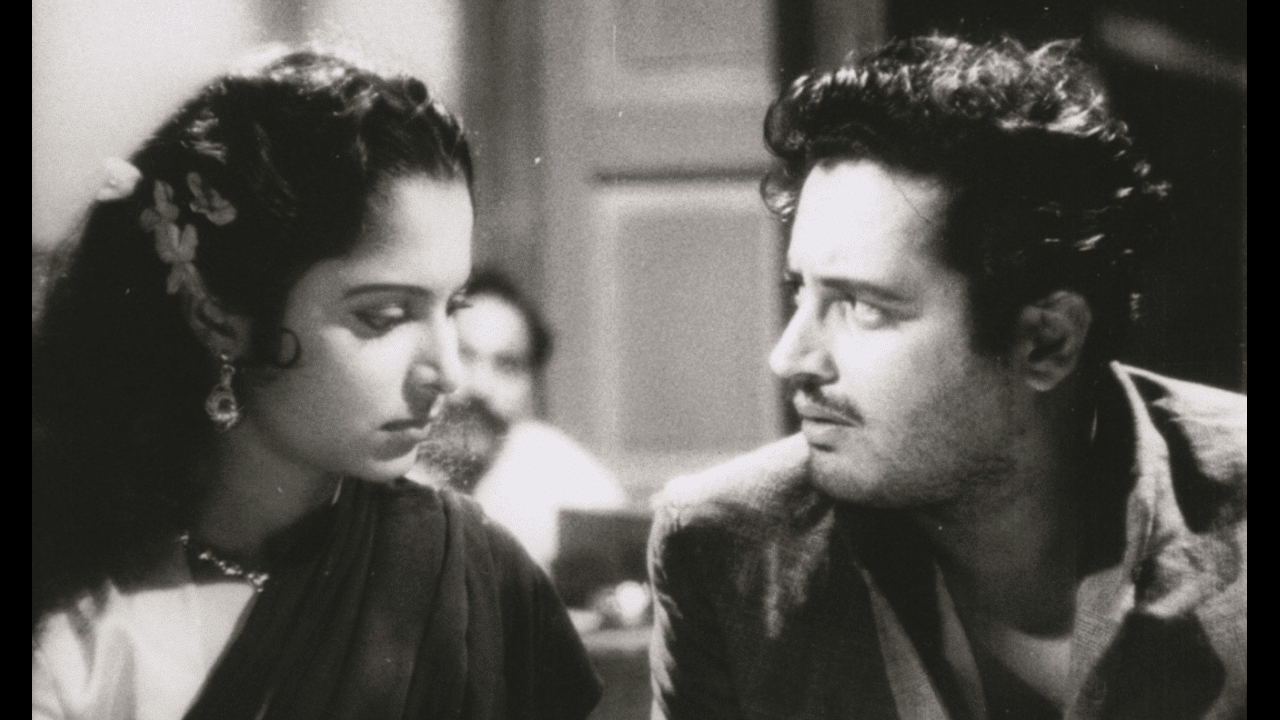New Delhi: Freud once said, “One day, in retrospect, the years of struggle will strike you as the most beautiful.” Is it so for Vijay as well, the character played by Guru Dutt in his seminal work Pyaasa? Today on Dutt’s birth centenary, we revisit Pyaasa and the questions it both answers and raises.
Pyaasa means different things to different people, but its influence and relevance through the years has not diminished in the slightest. The music, the climax, the lyrics, the side characters; the movie has rightly developed a cult status around the world. Released a decade after India’s independence the movie also acts as a snapshot of the time, both its joys and travails. The film is so rich in content that it can be seen through various lenses; political, social, ideological and personal.
The struggle between life and art
At the heart of Pyaasa is Vijay (played stupendously by Guru Dutt) and his journey through life, art and the times he lives in. The film brilliantly portrays the romanticised notion of the ‘struggling’ artist, what is special is that it neither glamourises the trope nor is patronoising towards it. The attempt by Dutt, who also directed the film, is to portray the struggle of the artist realistically, to show all that results from this struggle, both for the artist and the world around him.
The artist seeks redemption, both through his work and his life but when he gets it, he realises the mirage that is fulfilment of an ideal. An ideal he might have outwardly worked towards his whole life, but one he finally realises is not worth the toil.
Redemption for Vijay has to come not from the world but from within. His work thus is not just the locus of his livelihood but of his existence as well. The outward redemption goes against his very nature and the nature of his art. His art exists in opposition to it. Vijay is confronted with the fact that his struggle is in some way the genesis of his art.
For the artist, the ‘struggle’ never ends, so he has to find the ‘beautiful’ in it everyday. There seems to be no resting place for his struggle. The ever-pertinent motif of the self-destructive artist persists till the end. The world and its behaviour towards the artist might change, for the artist what changes at most is how he reacts against it. The reaction comes, Vijay realises this first to his detriment and finally, we hope for the better. The struggle though persists.
‘Ye duniya agar mil bhi jae toh kya hai’, Vijay’s final act is thus not of renouncing the world but of accepting his art and all that comes with it. He talks finally of going away from it all, but does not specify where he is going. His companion, he chooses as the only person who sees him through his art, not from his social identity and all that comes with it. Thus for the artist the erasure of his social self is important. It is only when the world thinks he is ‘dead’ that he attains all he desired all the time he was ‘alive’; money, fame and respect. The realisation is stark, but works for Vijay, renunciation results in transcendence. The struggle persists, and while it may sometimes be confusing for Vijay if it is beautiful, the art that comes from it is.
